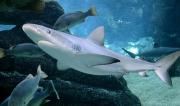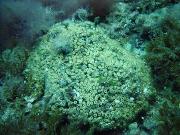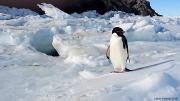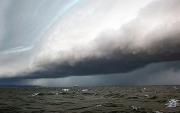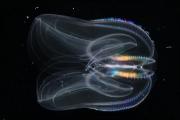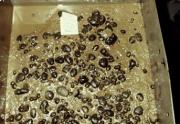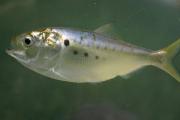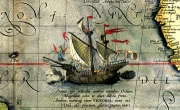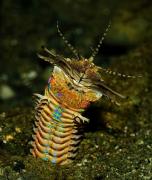Radio Program
Our regular Science and the SeaTM radio program presents marine science topics in an engaging two-minute story format. Our script writers gather ideas for the radio program from the University of Texas Marine Science Institute's researchers and from our very popular college class, Introduction to Oceanography, which we teach to hundreds of non-science majors at The University of Texas at Austin every year. Our radio programs are distributed at to commercial and public radio stations across the country.
When you’re being chased by a great hammerhead shark, simply running away isn’t always a great option. The shark is big and fast, so there’s a good chance it’ll catch whatever it chases. So the best plan is to run to someplace where the sharks can’t follow -- like shallow water.
Adult blacktip sharks on the southeast coast of Florida seem to have adopted that strategy. Researchers saw them do it in three videos shot with drones in 2018 and ’19.
Warmer oceans are bad news for corals. Higher temperatures can kill the living part of a coral, leaving only a bleached-out skeleton. Despite appearances, though, one species of coral might not be dead at all -- it might be only mostly dead. And when conditions improve, it can regenerate.
Researchers studied a type of coral found only in the Mediterranean Sea. In particular, they regularly checked on a large patch of coral off the coast of Spain from 2002 through 2017.
Shortly after the end of World War II, American forces on Kwajalein Atoll, a small island in the western Pacific Ocean, faced a problem. It would cost more to ship leftover airplanes to salvage yards than the planes were worth. So more than a hundred Corsairs, Wildcats, Avengers, and other warplanes were loaded onto barges, carried into the middle of the lagoon, and dumped.
Today, most of them are encrusted with corals and surrounded by fish and other marine life -- artificial reefs that have been growing for 75 years.
Adelie penguins live in one of the iciest regions on Earth -- on the rim of Antarctica. But when the ice around one colony thinned out a few years ago, the penguins flourished. The adults grew fatter and the chicks were more likely to survive.
Adelies are among the smallest penguins in Antarctica. A typical adult is up to a couple of feet tall and weighs about 10 to 12 pounds. They’re also the most common penguins on the continent -- they form colonies of thousands of birds all around it.
If you live along the coast, you might get hit by several tsunamis a year -- but not even know it. They aren’t generated by underwater earthquakes, volcanoes, or landslides. Instead, they’re caused by the weather. So they’re called meteorological tsunamis -- meteotsunamis, for short. And they may be pretty common.
The sea walnut first entered the Baltic Sea almost 40 years ago, probably hitchhiking on cargo ships. Since then, this little critter has been a big pest. The population has exploded as the organisms have gobbled up young fish and crustaceans. And to sustain themselves during the winter, they may eat their own young.
Trillions of metallic nodules cover the bottom of a vast region of the Pacific Ocean. They’re worth a fortune, so mining operations are considering scooping them up. But like many things, the idea is complicated. The nodules are the key to survival for many species of life. So taking the nodules away could cause massive loss of marine habitat.
Atlantic menhaden stinks. Because of that, its oily flesh isn’t exactly a sought-after treat. Over the decades, though, it’s been a common sight on American dinner tables -- in margarine, salad dressing, cookies, and other products. It’s also been used to feed pets, other fish, and even plants. In fact, menhaden is one of the most economically important fish in American waters.
In November of 1520, an expedition led by Ferdinand Magellan headed into an ocean that was a complete mystery to European sailors. It turned out to be far larger than they expected -- and far calmer. It was so calm, in fact, that they called it the Pacific -- a name that means “peaceful.”
Magellan’s expedition was backed by the king of Spain. It was looking for a new route to the Spice Islands -- part of modern-day Indonesia, in the western Pacific. Previous journeys to the islands went around the tip of Africa and across the Indian Ocean.
The sand striker is like something out of a nightmare. The worm hides in the sediments on the sea floor, then lunges out to grab a passing fish or crustacean. It clamps its jaws together so fiercely that it can snap the prey in two. It’s even been known to inflict nasty bites on people.

